In Search of Priory Road
Commencing to write this article on the day that government approval was granted for the Bramley-Moore Stadium, social media was awash with good wishes to all those concerned in successfully seeing the project through. There were the inevitable online exchanges, with a great many from the envious dark side, who could see they were now visibly condemned to spend yet another generation in their Big Stand with little chance of expansion, a move, or even a laughable ground-share. Meanwhile, many commented online that this would be Everton’s third stadium build in the city.

Yet before the club had embarked on their first build, they had already played on several home pitches, one of which was Priory Road. This was a short-term fix to growing problems relating to their home base on Stanley Park.
Some of those problems regarding the public pitch are revealed in this extract from a Bolton Wanderers v Everton match report in March 1883;
Association football does not find favour at Liverpool, consequently there are no big “gates” and the arrangements for matches are somewhat primitive. Home and away matches were arranged with Everton, and the latter visited Bolton early in the season, on a drenching day when they were beaten by the large total of 13 to 1; This time the game was not so disastrous, but this was probably owing to the Wanderers arriving shorthanded. Both Kennedy and Fowler were missing, and the game was started with nine men, Hudsmith coming in afterwards, bringing, however, but little augmentation of strength. The plot in Stanley Park, on which the match was played, was dry and hard, the grass being worn off in places, whilst the fact of there being no ropes to protect the touch line caused the players to be very much inconvenienced by the inroads of spectators. Such spectators were very much in the way, at times seeming impressed with a desire to shake hands across the ground, so greatly did they encroach over the line.
Bolton Evening News, 5 March 1883
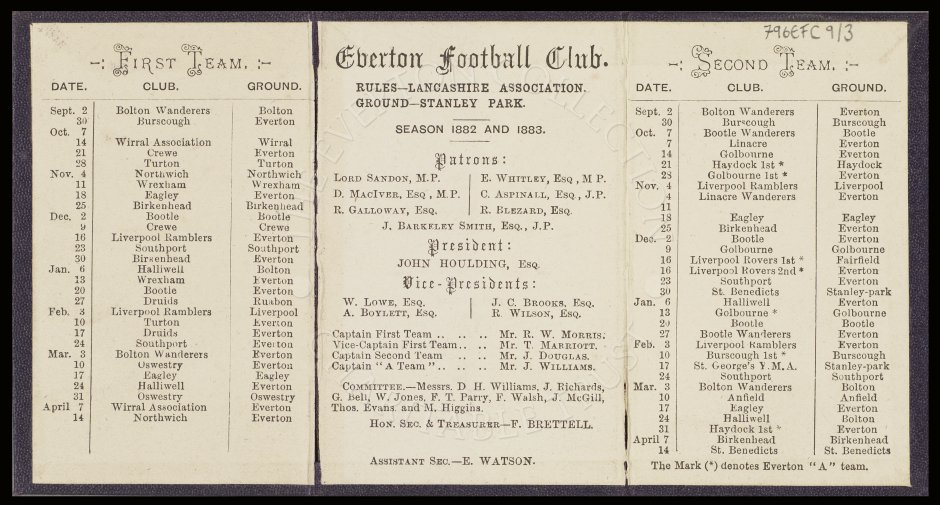
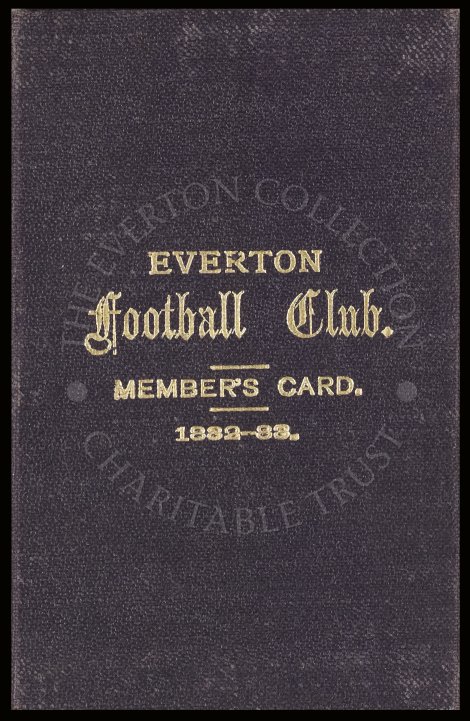

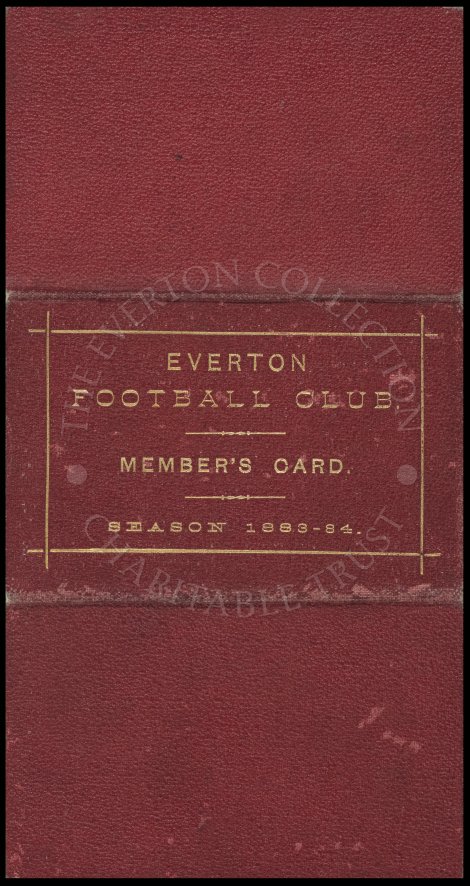

These membership cards for the last season at Stanley Park, and the season at Priory Road, are now in the Everton Collection. They were secured by David France, who wrote about them (with David Prentice) in his book ‘Magnificent Obsession,’ and is worth repeating here;
‘I have been fortunate to unearth 17 of the club’s earliest season tickets also known as member’s cards. Many are of historical significance, and include those from our first season at Anfield (1884/85), the inaugural League campaign (1888/89) and our first championship season (1890/91). More often than not, the colours of these items mirror those of the shirts selected for that season. Also, I have gathered numerous later examples, including one from our second championship season (1914/15). But nothing compares to the one from our days in Stanley Park (top) except perhaps that for the following season at Priory Road (underneath). Both are in remarkable condition and it is hardly surprising that I can recall the night I acquired them from a collector in Southport. Or rather, I can remember the drive home when I had to halt my car under a streetlight in Bootle just to pinch myself and reflect on their magic again. After all, these small pieces of memorabilia mark the birth of the Blues.’
Stanley Park attendances were averaging between 800-1,500, and that fact that the crowd could easily encroach upon the pitch caused its own problems for players, but there was also the issue of lost revenue playing on land in a public park. Everton were finding it difficult to attract the bigger clubs and realised a more suitable home would be needed, if they were to capitalise on the growing local interest in the game and to move up to the highest level.
There had also been a revision in the law for the forthcoming 1883-84 season.
The limits of the ground shall be, maximum length, 200 yards; minimum length, 100 yards; maximum breadth, 100 yards, minimum breadth, 50 yards. The length and breadth shall be marked off with flags and touch line; and the goals shall be upright posts, 8 yards apart, with a bar across them 8 feet from the ground. The average circumference of the Association ball shall be not less than twenty-seven inches and not more than twenty-eight inches
The Laws of the Game (1883) by the Football Association
The crossbar was now compulsory, previously it had been an option, a tape being the alternative. Although pitch markings were another nine years off (and John Brodie’s goal nets would not be introduced until September 1891), there now had to be a marked out touchline in addition to the flags previously utilised. This, together with the fact that the referee now had the power to abandon the game if spectators encroached upon the pitch, made it essential that a new ground was secured where the changes could be implemented. The club couldn’t afford to be sanctioned or excluded from competitions if they could not comply with such basic rules.
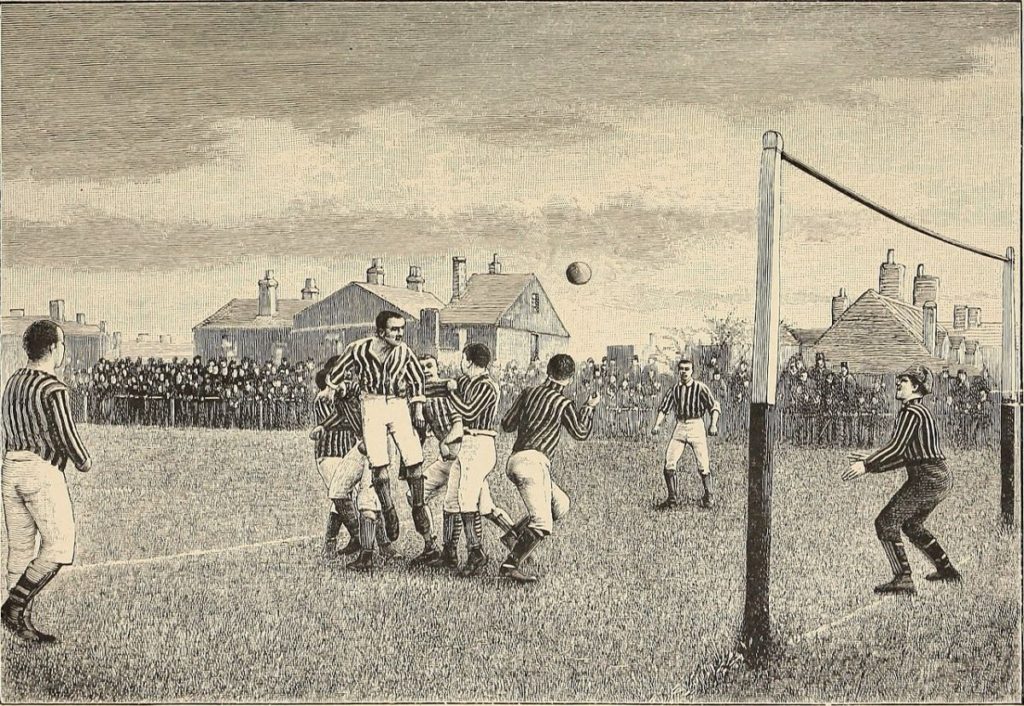
On 14 April 1883, Everton played out a 1-1 home draw with Turton, which would be their final appearance on Stanley Park. Before the commencement of the close season, plans were already in place for a move to a more suitable home.
According to John Roberts in Everton the Official Centenary History (1978), negotiations had already begun with a new local resident, who had just moved in to a large house on Priory Road facing the Stanley Park pitch. William Crossley Cruit, was now the new occupant of Coney Green at 232 Priory Road, following the recent departure of Thomas Seed. Roberts states that a meeting was held in the Sandon Hotel in March 1882 (actually March 1883), where Cruit offered Everton the use of one of his fields off Priory Road adjoining his house, for the forthcoming season, September 1883-March 1884.
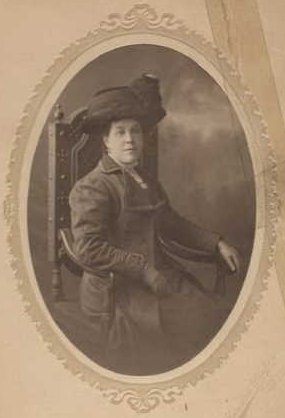
[Thomas Seed was the Director of Fleetwood Shipping Company and had sold up and had already left Liverpool, returning to his main home in Fleetwood, where he was intent on retiring with his wife and family. Despite some suggestions, he played no role in the negotiations with Everton FC, having already left the scene.]
[William Crossley Cruit*, born in 1836 at Sawston in Cambridgeshire, was a livestock agent dealing in horses and cattle. A single man at the time of his venture with Everton, on 16 September 1888 in Manchester Cathedral, he married Annie Cumming Pettrie (pictured), a London schoolmistress, twenty years his junior. Their first son, Rowley was born on January 1890, and they continued living in Coney Green through the 1890s. Their second son was born in 1898, just months before the untimely death of William Cruit at just 52 years old on 1 October 1898. He was buried close-by in Anfield Cemetery. His family had been well provided for – the legacy left to his widow in respect of his full estate amounted to around £4.6 million in present day values. *This is the correct spelling of his name, verified by a large number of documents, such as baptism, marriage and death records, census etc. It has been consistently misspelled in a variety of Everton histories, articles etc, ever since 1883.]

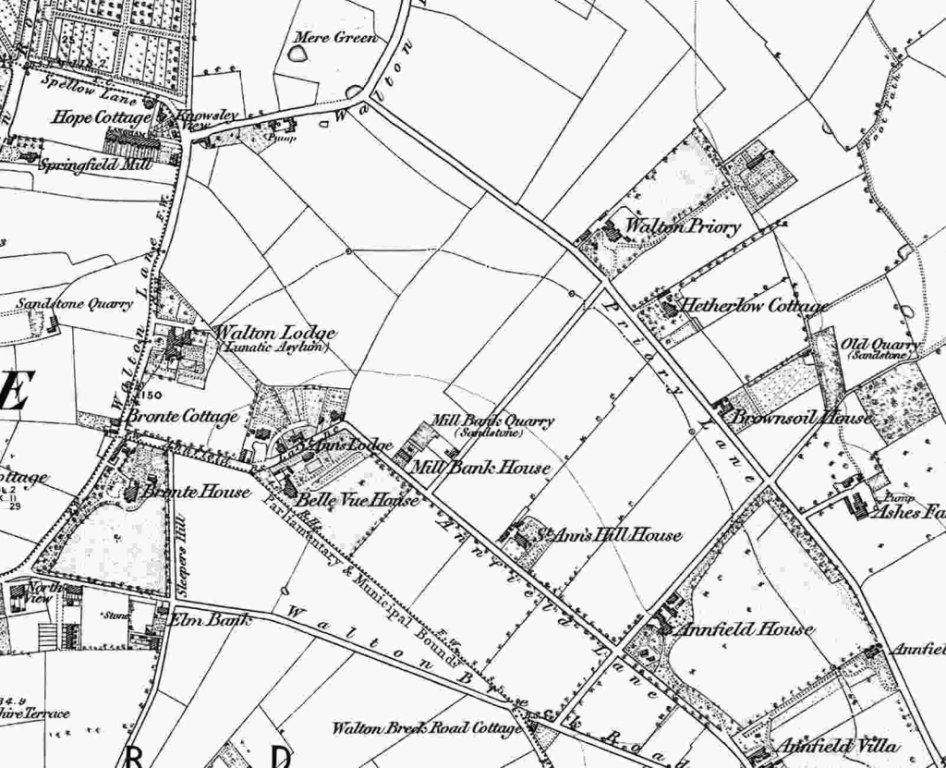
Short of funds, the Sandon Hotel meeting resulted in certain club officials present promising the club £22, plus there would be a concert by Sam Crosbie’s Teachers’ Choral Society at the Hand-in-Hand Club (later the YMCA) in Foley Street which would bring in another £20. This enabled the club to erect a hut for players to use as a dressing room, a primitive shed for club officials, a few seats for spectators, goal posts, and railings around the playing area.
However, the ground was still not quite ready for the commencement of the season, so Everton’s first home game against Southport FC on 15 September 1883 was held at the other end of Priory Road, at Walton Stiles, which resulted in 3-0 home victory.
Everton 3 v 0 Southport
The Liverpool Courier, 22 September 1883
15 September 1883 Walton Stiles
Although the ball was set rolling in this district on Saturday last, there is as yet comparatively little to report. The Everton have got the bulk of their old team together, which has been materially strengthened by the accession of C. E. Lindsay in goal, and E. Berry (late of Liverpool) on the right wing. With Marriott and Parry again in their places at back and half-back, an advanced position has been accorded for Pickering as centre-forward, in conjunction with McGill. The match lists is a strong one, and in addition to the usual local features are fixtures with the vastly improved Preston North End club, Wrexham, Oswestry Port Vale, Burslem Crewe, and Eagley. The costume has been changed to light-blue and white quartered jerseys, and has quite a taking appearance, but far the most important departure is the change of ground to a private enclosure in Priory Road situated at the north-east corner of Stanley Park.
Walton Stiles
Walton Stiles was actually a footpath running from Walton Church, through to the later route of Goodison Road, and on down Spellow Lane. This Walton Tithe Map of the 1840s shows the original route with the later additions of Goodison Park at the bottom, and the nearby Walton Stiles football pitch and recreation ground highlighted in green. The football ground took its name from this long established thoroughfare skirting the field boundary.
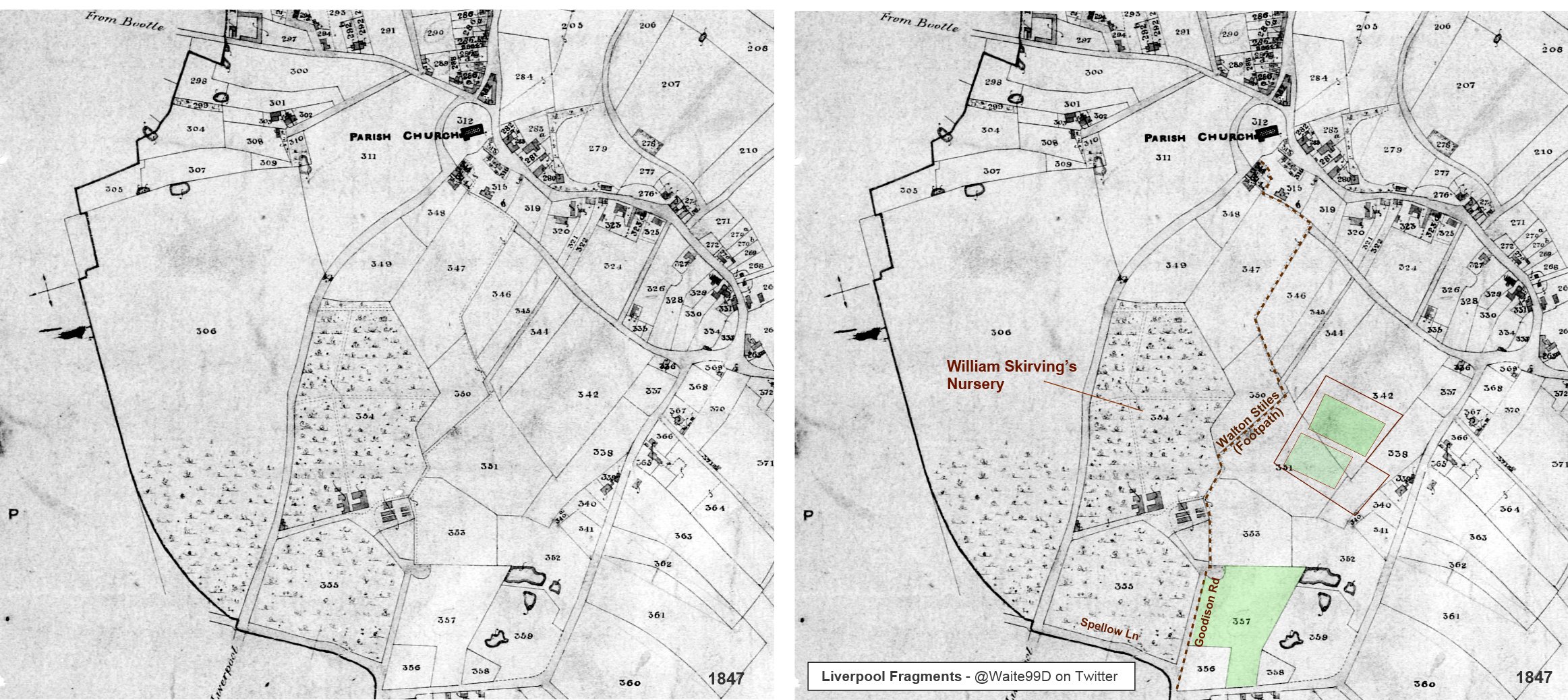
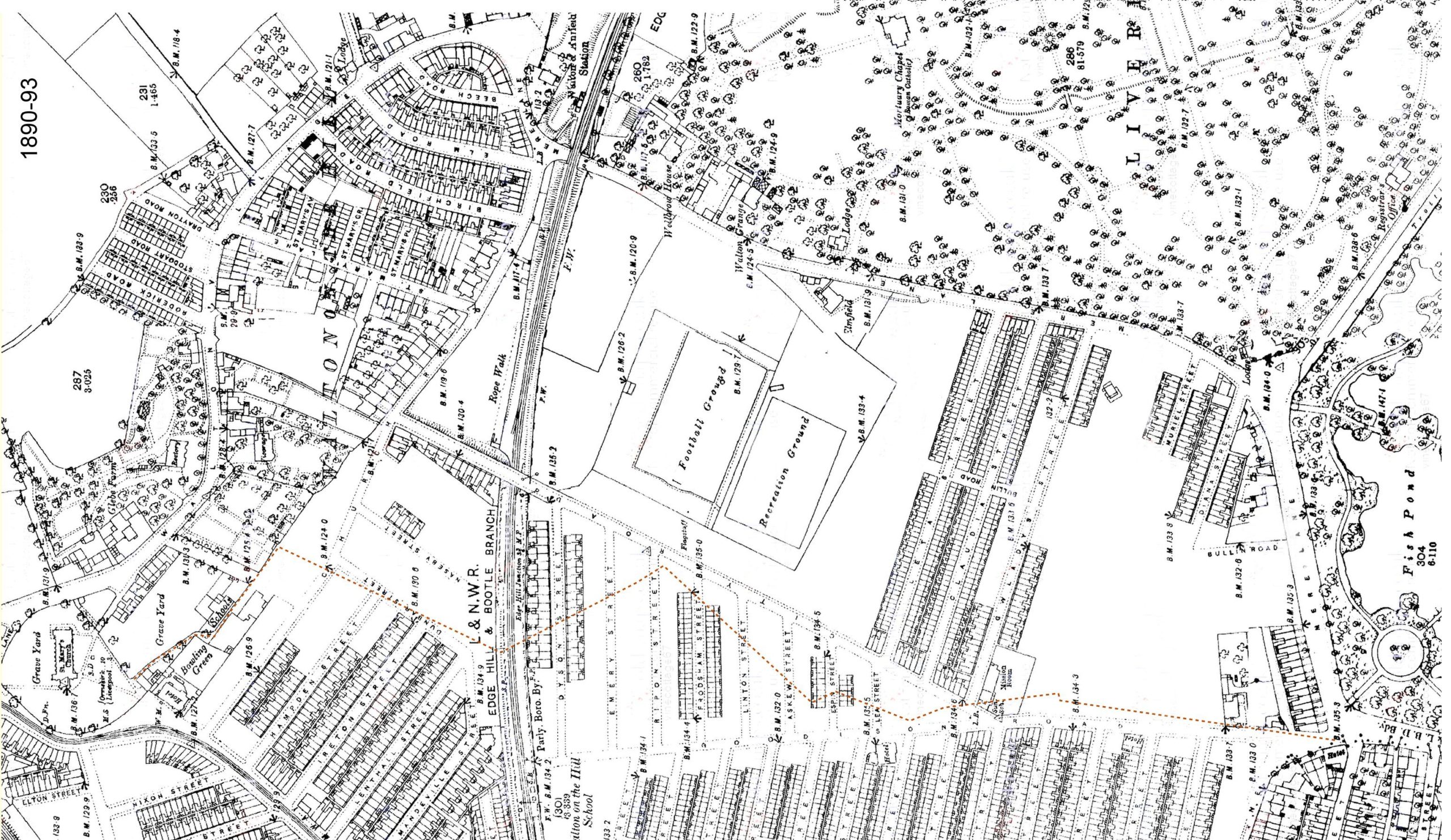
Thomas Keates wrote poetically of the lane in 1912;
A Lover’s Walk
A farm-house stood sentry over the other fields, hedge-bordered, away to Walton. The present Goodison Road covers a part of a stile-road, a lover’s walk called Walton Stiles. Instead of the jostling crowd of today, stray lads and lasses limply sauntered through the wining rural pathways, its curving recesses facilitating the bold ‘osculatory license’ young men have always been addicted to. “I can see the corn waving gracefully, zephyr-fanned, in the bright sun, on a hot day, as plainly in my memory as I did in those happy days with my eyes, when life was young. Bill is strong to talk of the old days, the old boys, and the old scenes. On the river side of the Stiles, Skirving’s Nursery graced the land (we stole glimpses of its glorious floral beauties through the giant hawthorn hedges from Spellow Lane (hawthorn edged on the north side) away to Walton, and down to the present country road, on the other side of which, ploughed fields met the eye down to Bootle.
Thomas Keates, Liverpool Evening Express, 23 November 1912
Coney Green, Priory Road
There then followed a series of away games, which enabled any last-minute measures to be completed, before the first game was held at the new Priory Road ground. In fact, the inaugural game wasn’t part of the club fixture list, but an exhibition game between Liverpool and District against Walsall and District.
This day week, Liverpool and District meet Walsall and District on the ground of the Everton Club…. The kick off will take place at three o’clock prompt, and I may state that the new ground of the Everton Club is situated in Priory Road, opposite the end of Arkles Lane and the south-east corner of Stanley Park.
Liverpool Daily Post 20 October 1883
Association Football
The Liverpool and District Association are making every endeavour to induce the public to be present in numbers at the match with Walsall and District, which takes place on the Everton ground today. The “red” line of omnibuses running from the Exchange to the Breck Road orbital will go through to the football ground, the first coach starting at 1.45pm and following on up to 3pm. In addition to this, the Cabbage Hall trams run to the end of Priory Road, in which the field is located, so that the means of reaching the ground are ample: and I trust they will be taxed to the utmost capacity. There will be omnibuses back to town at the conclusion of the game. The kick-off must take place at 3pm prompt as the visitors have to catch an early train.
Liverpool Daily Post 27 October 1883
Tony Onslow has suggested;
…that the ground, it would appear, was at the rear of Mr Cruitt’s home and could only be reached on foot by walking along the undeveloped surface of Lower Arkles Lane. This thoroughfare, however, has completely vanished off the map.
Tony Onslow, The ‘Lost Home’ of Everton Football Club, ToffeeWeb.com, 25 November 2015
However this is unlikely, as there is no evidence that the ground was that far down, nor is there any mention of Lower Arkles Lane. To highlight the references already cited;
the Cabbage Hall trams run to the end of Priory Road, in which the field is located, so that the means of reaching the ground are ample (Liverpool Daily Post 27 October 1883).
The kick off will take place at three o’clock prompt, and I may state that the new ground of the Everton Club is situated in Priory Road, opposite the end of Arkes Lane and the south-east corner of Stanley Park. (Liverpool Daily Post 20 October 1883).
the most important departure is the change of ground to a private enclosure in Priory Road situated at the north-east corner of Stanley Park (Liverpool Courier, 22 September 1883)
If the ground was on Lower Arkles Lane, it would have been recorded as such in the numerous reports during the rest of that season, but it isn’t mentioned at all. References consistently refer to the ground on Priory Road. The issue then, is which side of Coney Green House? Given the size and shape of the two fields, plus allowing for spectators, it is most likely the field to the left of the house when looking from Priory Road. As with the Stanley Park pitch, the layout ran down the hill, not across it, and match reviews constantly refer to ‘hill advantage’ for both pitches at various stages during the games covered.
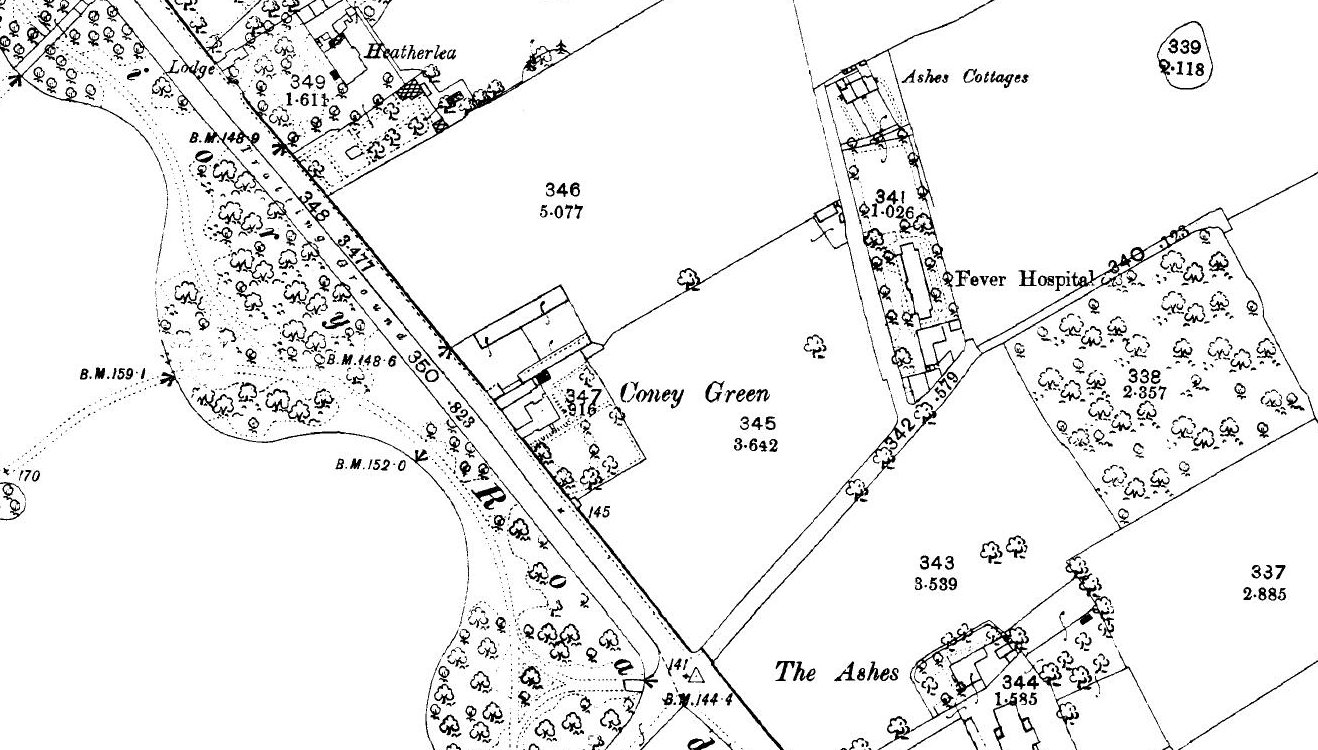
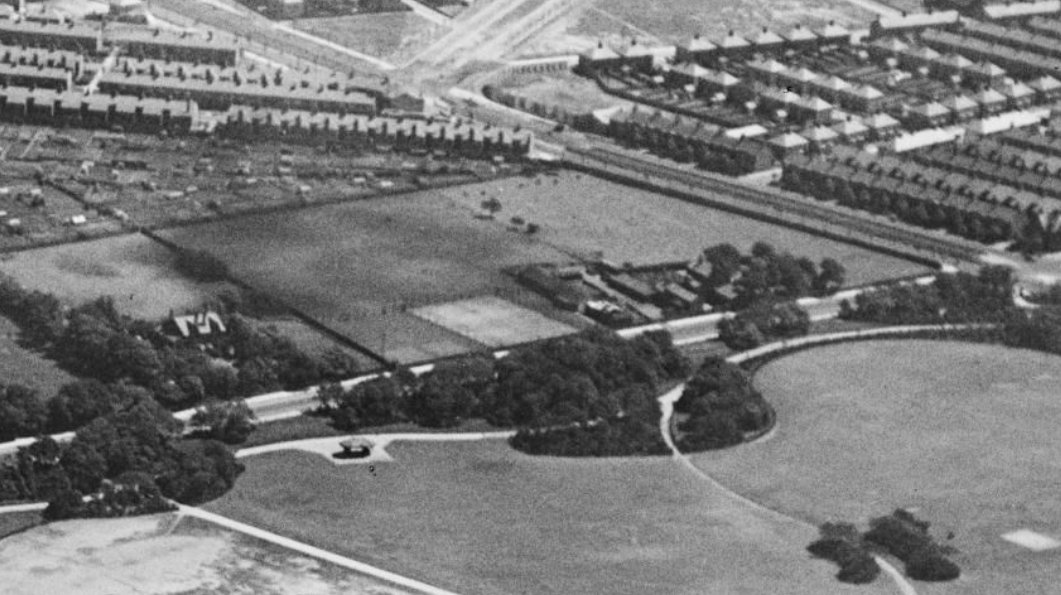
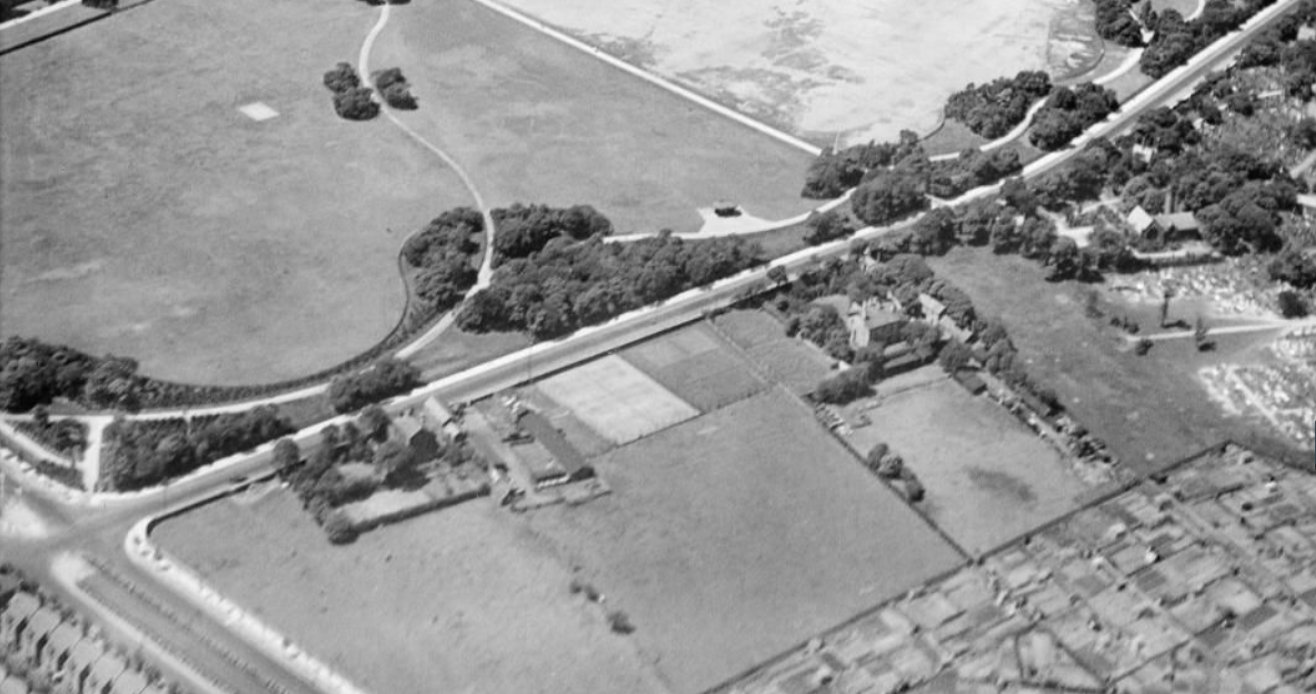
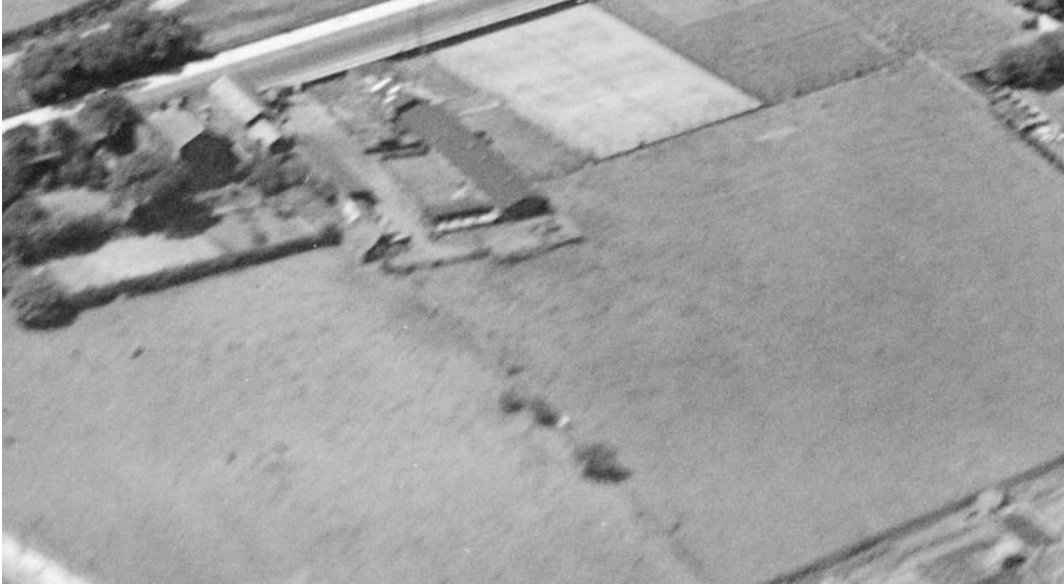
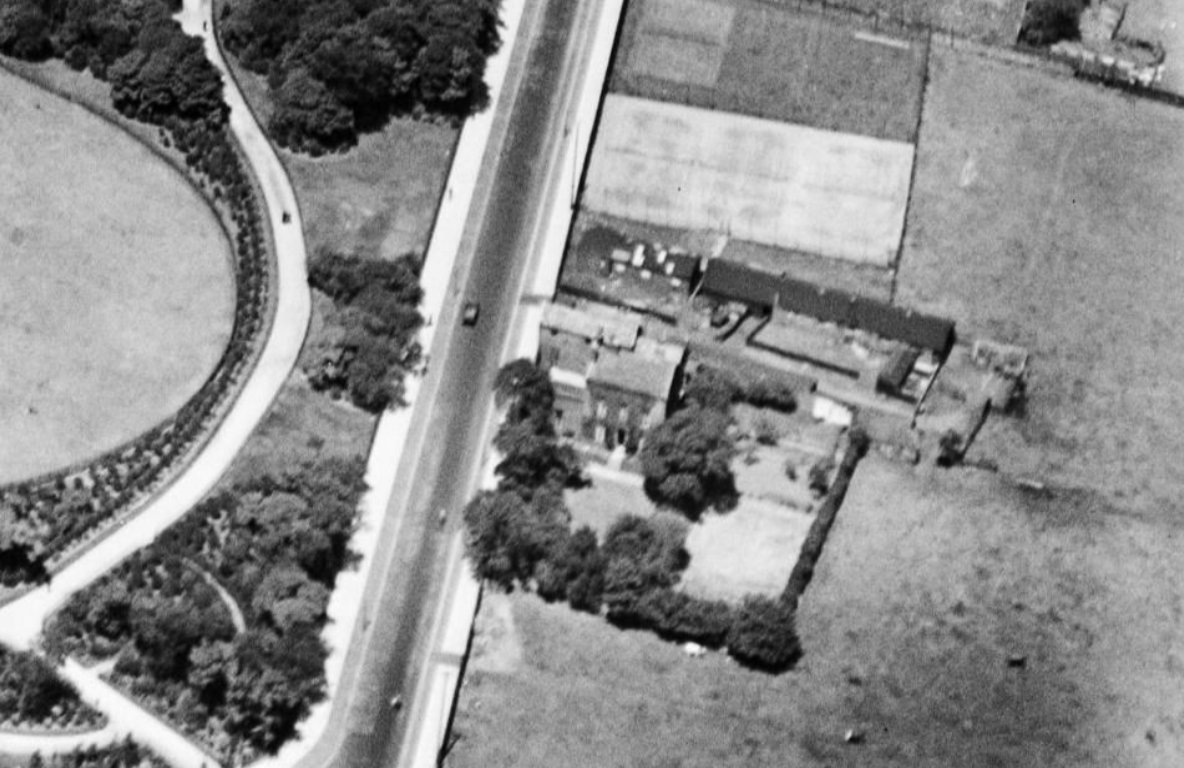
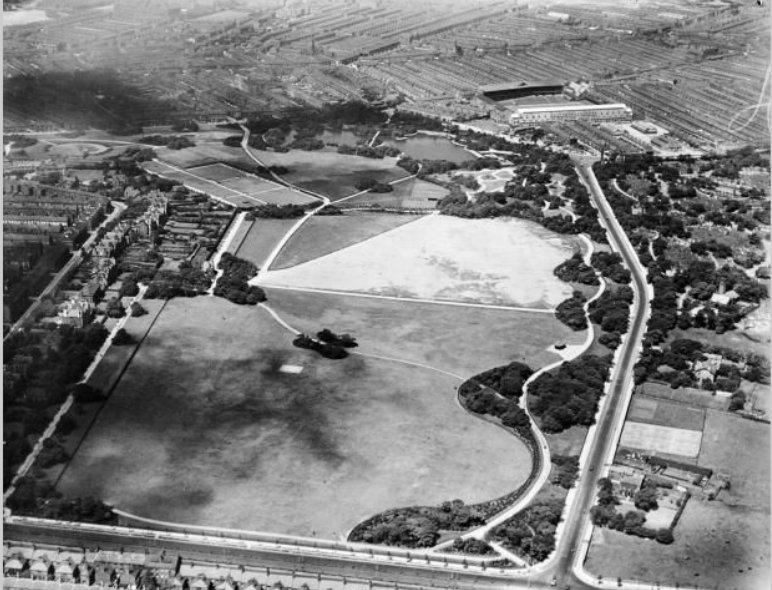
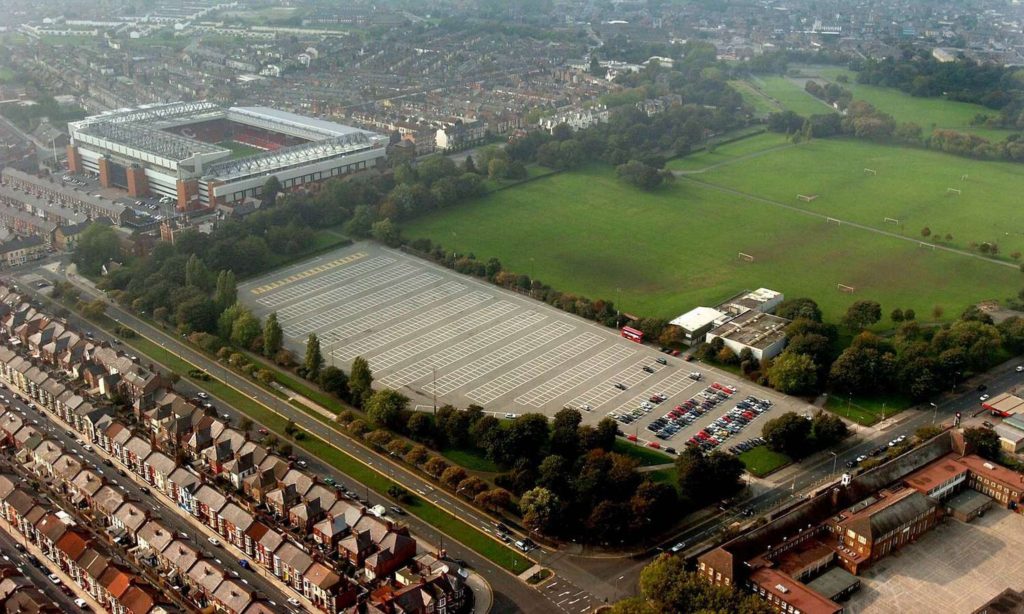
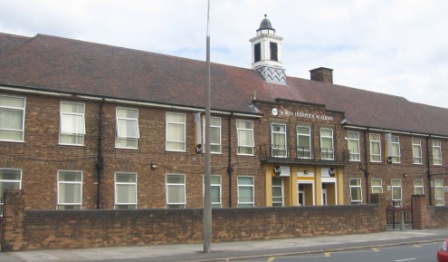
The school closed in 2005, and the newly merged Anfield school with Breckfield Community Comprehensive School re-opened as the North Liverpool Academy the following year. This was later relocated to Heyworth Street in a purpose built academy, while the Priory Road site was demolished in 2011 and later laid out as a football car park.




The First Game at Priory Road
Liverpool and District 3 v 3 Walsall and District
October 1883 Priory RoadThe initiatory match on the new ground of the Everton club, Priory Road, was played on Saturday, when teams representing the above associations met to try conclusions, and was on the whole a very propitious affair. There was a company of about a thousand present, and the manifestations of enthusiasm testified to the enjoyable and interesting character of the contest. The visitors were a fairly representative team, whist their opponents were the best eleven that has yet done battle for Liverpool. Both sides were well balanced, and though the game ended in a draw –three goals each’ –Liverpool had the best of the fight, especially towards the finish. Fortunate in securing choice of stations the home team at once carried the play down the hill, and after repelling a hot shot by Berry, the custodian was beaten by McGill, but the goal was on appeal disallowed. Higgins in the continued assault was very active with shots, all of which, however, were ably repelled. Rushing along the right wing, the Walsall forwards became very aggressive; still Morris, Turner, and Bailey averted danger until McGill got away down the centre and initiated an attack which culminated in Plant scoring first goal.
Upon the reverse, Bishton at once took the play to the opponent’s dominion, and Meakin getting past Bailey, equalised the record. Following this, matters went on pretty smoothly for about ten minutes. Higgins, taking advantage of some undecided play on the part of Walsall on a claim that the ball had been over the line, passed over to Berry, the latter shooting through in brilliant style. The visitors almost immediately after replied with a second goal at the hands of Garbutt, and the interval arrived with the score equal. On the resumption of play, with the hill against them, the Liverpoolians were still enabled to keep up the attack the greater portion of the time. Dutton, during a flying visit to the home quarters, potted a third goal for Walsall, giving them the first time a bit in hand. Liverpool played up with great spirit from this point, and after McGill had headed through and the referee had vetoed the point, Plant, as the result of some good passing among the forwards, equalised matters, amidst cheers, by sending the ball skimming through between the keeper’s knees and the posts, a well fought game terminating shortly afterwards in a draw. For Walsall, A. Jones, Bishton, Dutton, and Garbutt were the more conspicuous figures; whilst the Liverpool representatives played uniformly well.
Teams; – Liverpool; – Bailey (Ramblers), goal; G. W. Turner (captain) (Ramblers), and R. Morris (Everton), backs; and J. Arlow (Stanley) and W.H. Parry (Everton), half-backs; W. H. Wilson (Stanley), E. Berry (Everton), G. Smith (Ramblers), J. McGill (Everton), G. Plant (Bootle), and M. Higgins (Everton), forwards.
Walsall; – Icke (Walsall Town), goal; A. Jones (Walsall Swifts), and Reynolds (Walsall Town), backs; W. Dutton (Birmingham Excelsoir) and Shorter, half-backs; H. H. Dyoss, (Walsall Swifts), Foster, (Darlaston Saints), and Meakin (Birmingham Excelsior), Garbutt Styche (Wednesday Town), and Bishton (Birmingham Excelsior), forwards.
Liverpool Courier, 29 October 1883
Revenue for the first game amounted to just 14s (70p), today worth around £85. Not at promising start towards increasing the club’s coffers, especially with rent to pay. The move to the next level still looked a long way off. After the inauspicious start in October 1883, by the season’s end they had made only £45 (£5,500). (Nevertheless, just one game against Bootle the following season generated £39, and a four-fold increase in total for 1884-85).
The First Everton Game at Priory Road
It had been a wait of several weeks, but Everton’s first game on their new ground eventually took place on 3 November 1883;
Everton 3 v 1 Hartford St. John’s
3 November 1883 Priory Road
The above match was played on the new ground of the Everton club, Priory Road, on Saturday, in the presence of a goodly number of spectators. St. John’s won the toss, and elected to kick down the hill. Williams kicked off, and the ball was at once taken into the Everton territory. The backs, however, relieved the pressure, and after a time the forwards worked their way up the hill. At this juncture the play of Rose and Blain for Hartford was beyond all praise, their accurate kicking being remarkably effective. At length, after about half an hour’s play, by means of an excellent piece of short passing W. Williams was enabled to register the first goal for Everton. The home team did not long enjoy their advantage, for immediately the ball was restarted, the visitors, by a grand piece of passing, worked the ball down the hill, and in five minutes time matters were equalised.On the change of ends, and with the hill in their favour, the Everton forwards soon became aggressive, several shots being made at the St. John’s goal. But for some time, Rose and Blain prevented all attempts to reduce their citadel, whilst Harper and Heywood several times broke away, and caused Lindsay to use his hands. Berry at Length got possession, and after taking the ball down the wing passed to centre, where a “bully” ensued, McGill eventually kicking through the uprights. The Hartford men now resumed themselves, and endeavoured hard to equalise matters, but without avail. Several times were they on the point of scoring, but luck was against them. The ball was then kicked to the centre of the field where the Everton forwards with a grand rush raced down the field, McGill again scoring. No other point was made, and Everton were left the winners by three goals to one.
Teams; – Everton; – Lindsay, goal; R. Morris and T. Marriott, backs; J. Pickering, and J. Preston, half-backs; E. Berry, D. H. Williams, J. Richards, W. Williams, and J. McGill, forwards. St. John’s; – Prest, goal; Rose (captain), and Blain, backs; Russell, Drinkwater, and Clarke, half-backs; E. Harper, Heywood, Davies, Eyres, and W. Harper, forwards.
Liverpool Courier, 5 November 1883
Now that their home base was seemingly secured, the club could press on and aim to establish themselves as a force to be reckoned with, and hopefully attract the bigger clubs, while laying down a firm financial footing. However, just five months later it was all to end in tears.
Everton’s stay at Priory Road came to an abrupt end in March 1884, when landlord William Cruit gave them notice to quit. His patience appears to have run out regarding the noise and unruly behaviour, and club President John Houlding later recalled the nonplussed reaction and blank looks of the secretary and committee on hearing they had also been instructed by Cruit to leave the goal posts, ropes, and stakes behind in lieu of unpaid rent.
Thomas Keates in his 50th anniversary History of Everton (1928), stated ‘Presumably, the now familiar vociferous exuberance of the spectators disturbed the pastoral serenity of Mr Cruitt’s environment’, but maybe Cruit was just beginning to realise that this was not the lucrative cash cow he thought it was going to be, and it was all much more trouble than it was worth.
Keates, a former Everton director, also suggested the site was unsuitable anyway, complaining, ‘It was a long, long walk to Priory Road, and no buses come near it’. He seems to have been unaware of the transport arrangements at the time, and even if the service didnt always reach down to Arkles Lane, there was a regular route along Walton Breck Road at the top of the lane. Keates seems to be merely repeating the assertion made by secretary Alexander Nisbet. Just after his election in 1887, he was interviewed by Cricket & Football Field regarding the suspension from the Football League that Everton were undergoing at the time due to fielding professional players. Asked about when he felt the club first began to emerge from comparative obscurity he answered,
‘I cannot give you the exact date just now; but I may say that the first ground we secured was in Priory Road, Anfield; but it was not a success, as it was too far out.’
Cricket & Football Field, 10 December 1887
But to suggest that it was ‘too far out’ was quite ludicrous, given they were playing on a ground across the road from their previous Stanley Park home, and their move to Anfield later that year was still not exactly in the city centre, and just at the opposite end of what is now the football car park. Thousands of Everton fans today in the age of more advanced transport options, have a far greater walk to make to Goodison. A stroll down the Stanley Park hillside or Arkles Lane was certainly no great hardship, even in the 1880s.
Nevertheless, there were two main positives to come out of the Priory Road experience. Firstly, a trophy at last.
Cup Success – the Liverpool Cup
The 1883-84 season at Priory Road might have been an unsettled one, but it did bring success in the form of the Liverpool Cup. Their route to the final saw them despatch St Peter’s 10-0 in round one, Liverpool Ramblers 4-1 (R2), Blackburn Wanderers 5-2 in the quarter final, followed with a bye into the final, where they were to meet Earlestown (of Newton-le-Willows). They had surprisingly beaten the favourites Bolton Wanderers in the semi-final, but just a few weeks earlier on 1 March, Everton had beaten Earlestown 9-0 at home, so they clearly went into this game in a positive frame of mind.
Liverpool and District Final Tie
Victory of Everton
Everton 1 v 0 Earlestown (scorer; W. Parry)
29 March 1884 Hawthorne Road, Bootle Att 2,500
Extraordinary interest was manifested in the final match of this competition which was brought to a close at the neutral ground of the Bootle club, Hawthorn-road, on Saturday, in the presence of around 2,500 spectators, a large number of whom accompanied the Earlestown team in the anticipation of a complete reversal of the result of the recent club fixture. Amongst those present were Mr. W. Earle, Mr. E. Stewart-Brown, Mr. A. B. Hall, Mr. T. Evans, Mr. H. A. Bailey, Mr. Lythgoe, and a large number of other ardent supporters of the Association game. Last season, it will be remembered Everton were the runners up to Bootle, while this is the first season’s appearance in the competition of the Earlestownians, who latterly have made such good progress that they were thought to possess a good chance of success. The Earlestown men put in a prompt appearance and when a little later the Liverpool players entered the arena they were cordially received. The usual preliminaries giving resulted to the advantage of the Everton captain, no time was cut to waste, and shortly before 3.30pm Daggall on behalf of Earlestown started the game.
Marriott returned, and the ball being received by the Everton left, a free kick for “hands” in front of the Earlestown’s upright passed off harmlessly. Straight afterwards McGill infringed the rule, and having paid the penalty, the Everton captain caused Champions to kick out for safety. Shots now began to fall heavily on the Earlestown citadel, the principal aggressors being Pickering and Gibson. Preston meanwhile being very conspicuous in feeding the forward rank. At length the siege was raised and Earlestown gained a corner kick, which Gibson turned to a trifling advantage, only, however, to be neutralised by a free kick conceded to Earlestown –palpably a mistake on the part of the umpire. The Earlestown centre, composed of Simms, Cameron, and Dagnall, now broke away, and on being checked, Higgins, and Parry again transferred hostilities to the opposites end, a final shot at goal passing outside, whilst a closely following shot by McGill compelled Champions to use his hands. Occasionally Earlestown made incursions beyond the centre, but never became dangerous. Duxbury had contributed a fine bit of play, when Williams scouring possession spoiled a good chance by a wild shot at goal, succeeding which a capital passing movement was executed by McGill, Berry, and Williams the former eventually being met by Bowker in front of goal. Notwithstanding some clever heading by Berry and Preston, Whalley eventually cleared danger, and half-time was reached without a goal being scored, Lindsay, the Everton goalkeeper, not having once touched the ball.
The excellent defence of the Earlestown backs and goalkeeper excited much enthusiasm among the supporters of the country club, but this was somewhat damped when, shortly after McGill had restarted the ball, Rich and Morris came into violent collision, especially as this necessitated a suspension of play and the temporary retirement of the former. On resuming Gibson on the Everton left took up the ball, and centring McGill delivered a hot shot into Champions’ hands. From now, for a brief interval, the play assumed a more even and interesting character, the cheers for Earlestown being loud as Duxbury and Dagnall headed an attack which caused Lindsay for the first time to use his hands. For a while the play was fast and exciting, Cameron and Whalley for Earlestown and Parry and Higgins for Everton playing up with marked ability. Rich having rejoined Ellison on the Earlestown right, was entrusted with a “corner” which being overshot, a further advantage in a free kick fell to the Earlestownians. This was well met by the Everton backs, who passed over to Berry and the latter taking the ball along the wing delivered the ball to the centre, when brief scrimmage ensued. At this critical juncture Parry rushed up and shot the ball through the Earlestown uprights amidst tremendous cheering, some twenty minutes having elapsed from the time ends were changed. An objection was raised on the plea of off-side play, but as the referee declared he had not seen any informality the point was recorded. A moment later Gibson shot hard from the left, the ball striking the upright and falling outside.
No sooner had the game been restarted than Higgins and Preston traversed the sphere into Earlestown’s quarters, the final shot of Williams being again erratic. Still the onslaught was maintained, McGill being prominent in the attack while the defensive play of Duxsbury and Emmett was very fine. Thus Everton continued to have the best of the play and the worst of the umpiring until, by a series of throw-in, the Earlestowns forced their way to the opposite end, where Simm from the left sent in a hot shot to Marriott. Again Earlestown had the ball at the corner, but nothing came of it, and the lines being cleared Preston contributed some exceedingly clever play, which enabled the Everton captain to make a futile shot at goal, the ball going high over the bar. Gibson also failed, and on Emmett, who was ably supported by Rich transferring the play to the Everton camp, Cameron sent in a stinger, which Lindsay repelled so cleverly that he was warmly applauded. Again the Evertonians were on the ball, and were ranged up in front of the Earlestown citadel, when the whistle blew announcing no side,” leaving Everton the proud winners of the district trophy and gold medals by one goal to nil, after a hard fought game. Champions in goal played superbly for the losing side, and the backs were in splendid form, while for Everton, what little fell to Lindsay, was admirably done, the pick of the hackers being Marriott, Preston, and Parry, the forward play falling mainly upon Higgins, Gibson, and Berry.
On the result becoming known there was great rejoicing in Everton, the winning team being driven triumphantly through the streets.
The following are the teams;
Everton; – C.M. Lindsay, goal; T. Marriott and R. Morris, backs; J. Pickering, W. Parry, and J. Preston, half-backs; E. Berry, and D. H. Williams, right wing; J. McGill (captain), centre; M. Higgins, and W. Gibson, left wing; umpire Mr. Gunning.
Earlestown; – Champions, goal; R. Rich and F. Emmett backs; J. Whalley, J. Duxbury, and R. Bowker, half-backs; W. Rich, and J. Ellison, right wing; Dagnall, centre; J. Simm, and J. Cameron, left wing; umpire, Mr. P. Hasty. Referee C. A. Carter.
Liverpool Courier, 31 March 1884
This was possibly the first time a cup winning side had been paraded through the streets of Liverpool, although they would have to wait almost three months before they would receive their medals and to get their hands on the silverware.
Liverpool and District Football Association A.G.M.
12 June 1884
Last evening, the annual general meeting of members of the Liverpool and District Football Association was held in the Neptune Hotel, Clayton square, for the purpose of transacting business and presenting the Challenge Cup to the Everton Club, with silver medals to each of the players in the final tie. There was a large attendance of members. Mr. John Houlding, one of the vice presidents, was called upon to preside. A formed vote of thanks was passed to the officers of the association, the hon, treasurer (Mr. Edwin Berry), and the hon, secretary (Mr. R. E. Lythgoe). Subsequently, Mr. Thomas Evans, chairman of the committee of the association, asked Mr. Houlding, as chairman of the Everton Club to accept the Challenge Cup.
He said it was a source of great pleasure to himself and the others members of the committee that the association had been able to acquire such a beautiful and valuable cup, and he hoped it would be the means of promoting greater interest in the game in the district. He was glad to say that during the past year improvement had been made in the play, and more interest had been evinced than previously in the various competitions.
Mr. Houlding, in accepting the cup, said that he was glad that the first time it had been won it had been carried off by the Everton Club (Applause). No doubt the other clubs of the association would not allow them to keep it long –at any rate they would, no doubt, all strive for the possession of it, and it would change hands occasionally (Applause). Referring to his recent visit to the Continent, he said he had seen nothing there of such games as were played in England, and which he believed were conductive to building up the stamina for which Englishmen were noted all over the world. (Applause) He hoped the association would go on and prosper, and that they would always be as flourishing a condition, financially and otherwise, as they were in at the present time. (Applause) Mr. Houlding then presented silver medals to eleven of the members of the Earlestown Club who played in the final tie.
The names of the winners of the cup, who received goal-centred medals are; – Messrs. C. M. Lindsay, R. W. Morris, T. Marriott, W. Parry, J. Preston, J. Pickering, M. Higgins, W. Gibson, J. McGill, D. H. Williams, and E. Berry. Formal business connected with the association was afterwards transacted.
Liverpool Courier, 13 June 1884

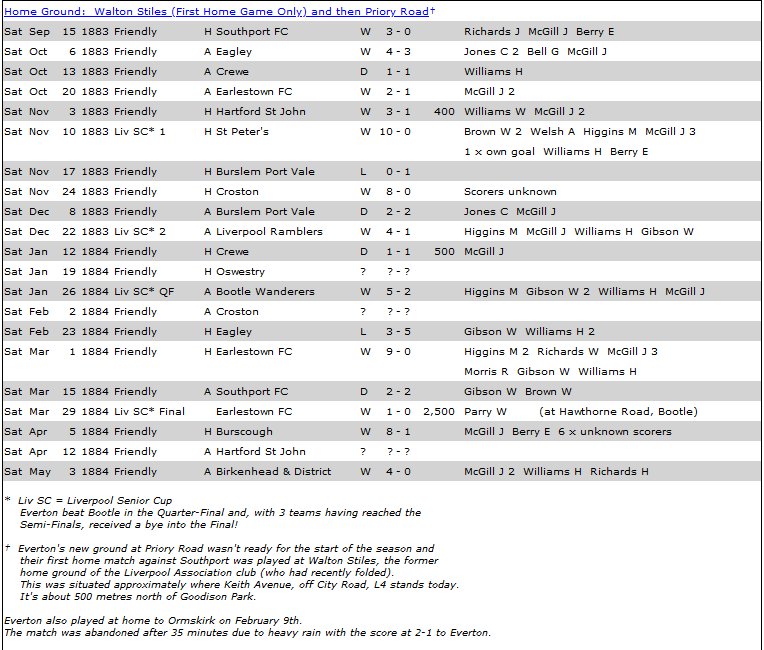
The Next Move – September 1884
The second positive to come out of the unhappy Priory Road experience, was that it prompted the club officials to secure an alternative home for the forthcoming 1884-85 season, and that of course would be Anfield.
Club president John Houlding agreed a deal to lease a patch of land owned by Joseph Orrell opposite his house on Anfield Road. According to the Liverpool Courier,
Everton, the Liverpool cupholders, found themselves homeless at the commencement of the season, but were fortunate in securing temporary possession of a building site in Anfield Road, which is being enclosed at considerable cost. The ground is easy of access, being in close proximity to the Sandon, the headquarters of the club; and as it admirably suited to the pastimes, it will doubtless be the most popular of our local grounds during the winter months.
Liverpool Courier, 20 September 1884
The first game at Anfield was a 5-0 defeat of cup final rivals Earlestown on 27 September 1884. By 18 May 1885 John Houlding bought Anfield outright at a cost of £5,228 11s 11d (around £680,000 today). The Liverpool Mercury announced,
Mr. Houlding said he had purchased the ground now enclosed. He hoped full justice would be done by the public to the grand match to be played on Saturday between Everton and a picked team of the Liverpool clubs.
Liverpool Mercury, 25 May 1885
Now with their own ground and their President as landlord, Everton FC could begin to enter a new phase.
What could go wrong?
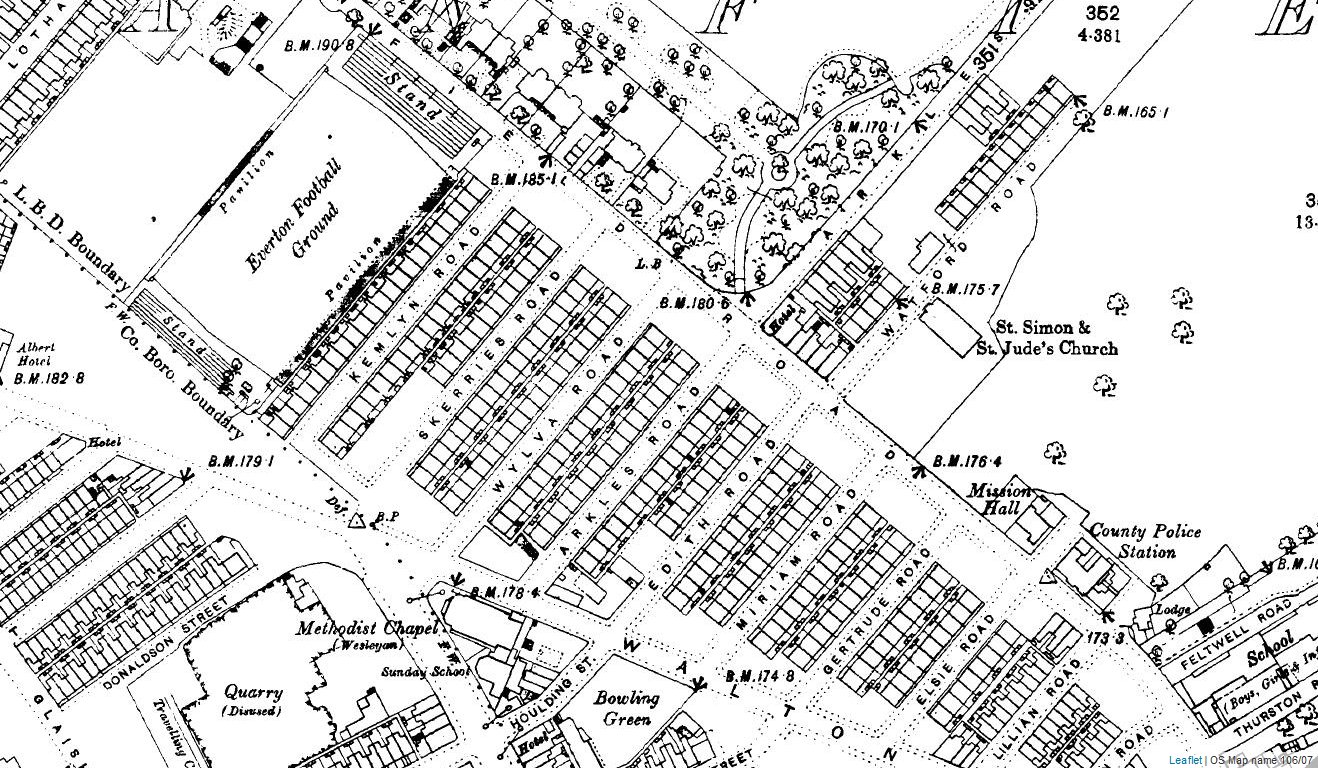
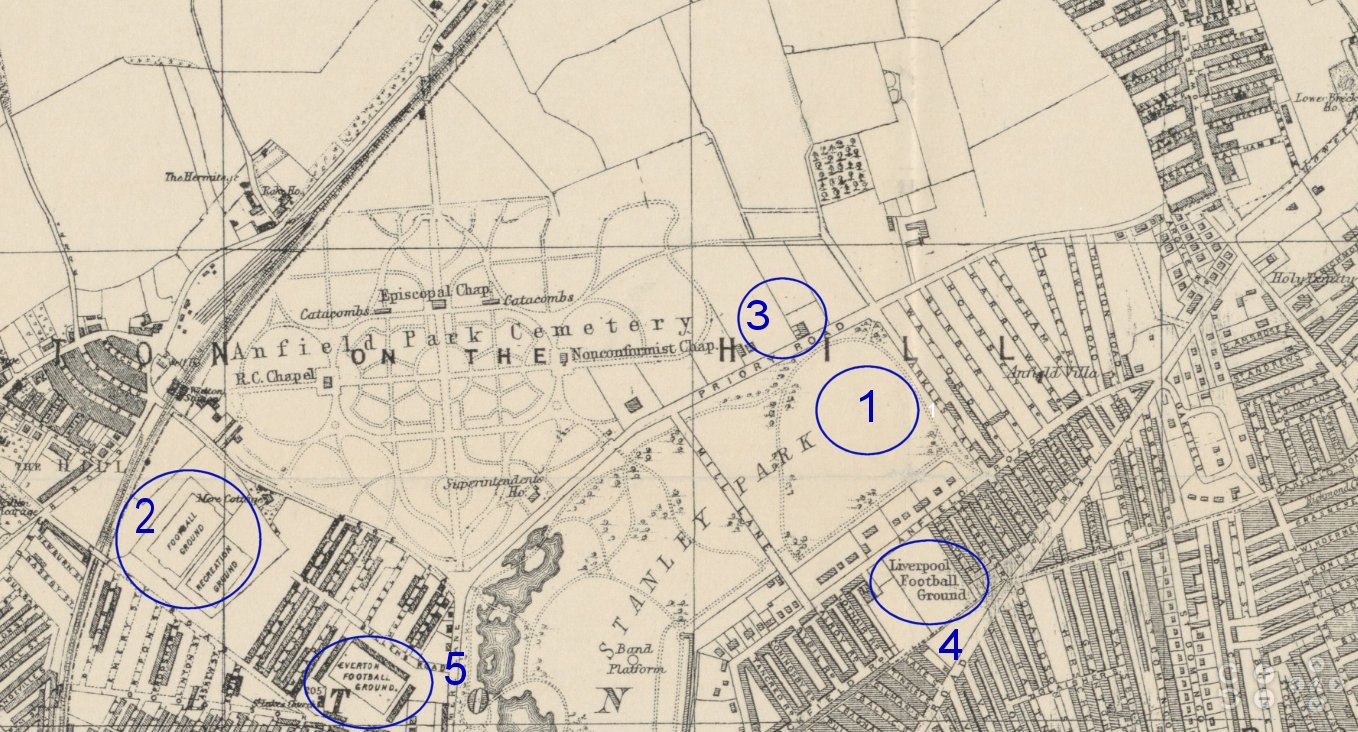
Five sites: 1. Stanley park pitch; 2. Walton Stiles; 3 Coney Green /Priory Road; 4. Anfield; 5. Goodison Park
Acknowledgements/Sources
The Everton Collection
John Roberts in Everton the Official Centenary History (1978),
Thomas Keates, History of the Everton Football Club 1878-1928 (1928)
James Corbett, Everton; The School of Science (2003)
Billy Smith, BlueCorrespondent website
Steve Johnson, Everton Results website
Darren White, Liverpool Fragments / Bygone Liverpool (Twitter / Website)
Liverpool Daily Post
Liverpool Courier
Liverpool Echo
Laws of the Game (1883)

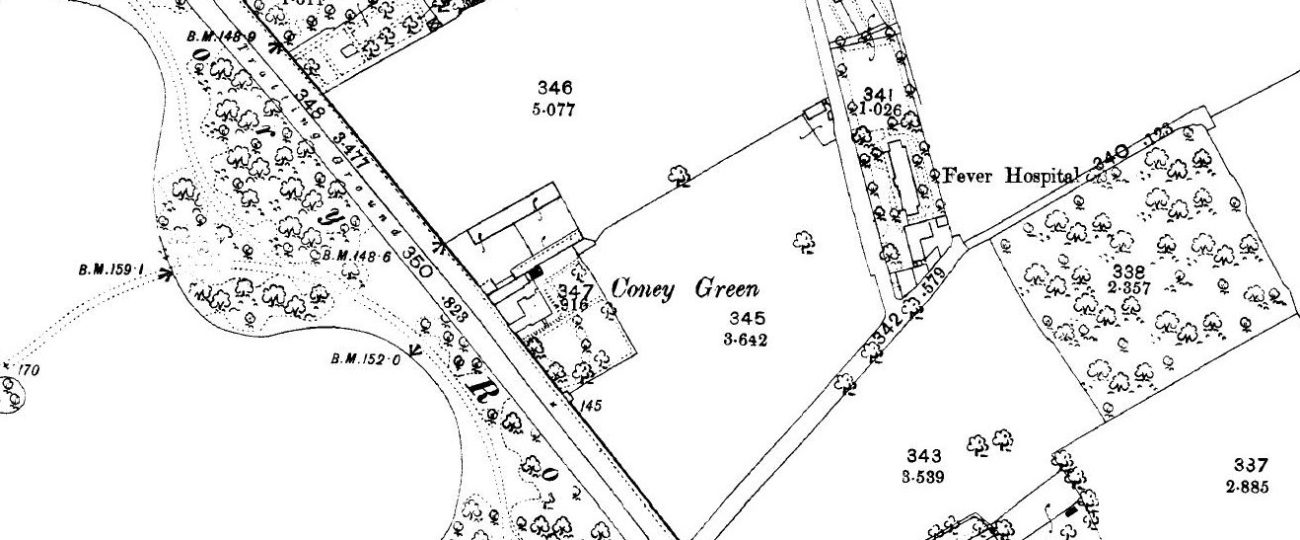
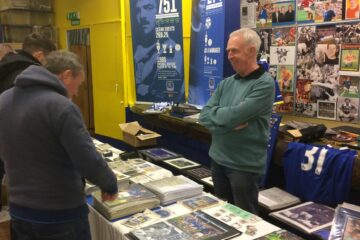
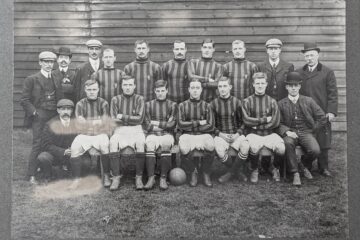
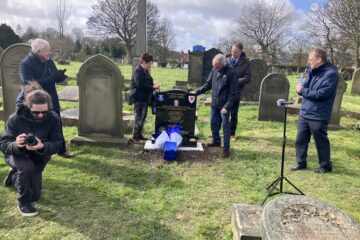
Enlightening. Amazing perspective of the birth and growth of our beloved Everton Football Club and an absolute pleasure to read. Thank you guys.
Many thanks for your kind words Anthony, much appreciated.
Magnificent. Seminal. Bravo!